#queen Louise of Prussia
Text


Happy Mothers Day to all who celebrate!!! Just wanted to share this find from a trip to Rhode Island. At first I wanted to get it just because she looks pretty and the idea of scoring a hand painted porcelain brooch for $35 was too tempting. I'm glad I did! After some research, I found out that this is the portrait of Queen Louise of Prussia and her porcelain brooches go for over $100 - winnn!!!
4 notes
·
View notes
Text
Józef Poniatowski’s women.
Part V. The rest of ladies who might have been of some interest to him
Good day everyone and let me share with the rest of information I possess on Prince Poniatowski's love interests. (Though, I have to admit, the ladies from this list were the least likely - from all the mentioned in these series of post - to have some kind of affair with Pepi.
To start I would like by Louise of Mecklenburg-Strelitz, the queen of Prussia.
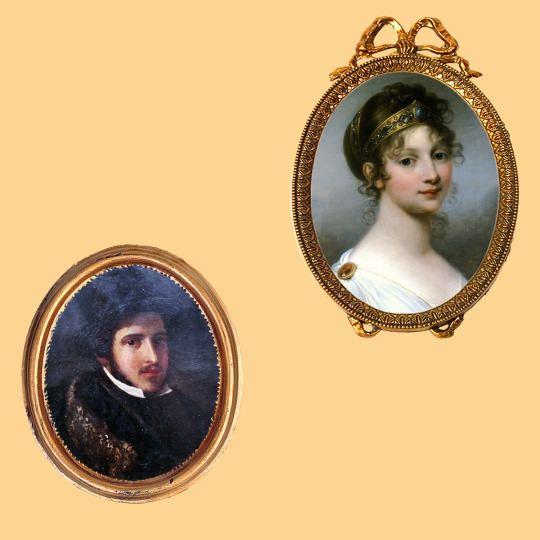
On the right - unidentified artist, miniature portrait of Prince Poniatowski, 19th century. On the left - portrait of Queen Louise by Giuseppe Grassi, 1802.
Prince Józef had the opportunity to meet the wife of the king Frederick William III at least four times, because the royal couple visited Warsaw - which had become a part of Prussia as a result of the third partition of Poland - three times, in 1798, 1802 and 1805. And in 1802 Poniatowski himself had to go to Berlin, to settle the matter of the inheritance left by his uncle Stanisław August.
According to Juliusz Fałkowski, while at Warsaw Prince Józef "…gave a ball and a dinner in the Copper-Roof palace in their honor [the King and Queen of Prussia - A.S.] and was flirting with the Queen everywhere", for which he received the star of the black eagle, although he rather "expected something else from the beautiful queen." After the departure of the royal couple, "he longed a little for the crowned beauty who had easily won his heart in passing."
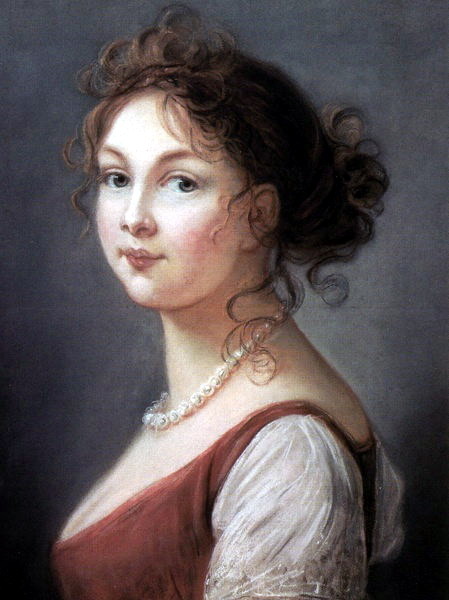
An Elisabeth Vigée-Lebrun painting of Queen Louise, c. 1801
The second source that mentions the relationship between these two is the book by Marian Brandys "Kozietulski i inni", which states (without giving sources, unfortunately) that during Pepi's visit to the capital of Prussia "… it was also said that the beautiful Queen Louise fell in love with in a knightly Pole."
However, if you ask my opinion about the likelihood of an affair between Pepi and the Queen of Prussia, I will say that in my opinion he was "flirting" her to make it easier to solve the inheritance problem. As for the fact that she could also be in love with the prince, I have no opinion because my knowledge about Queen Louise is not very great.
The second lady in today's list will be prince Józef's first cousin once removed, Anetka Potocka (née Tyszkiewicz, the daughter of Konstancja Poniatowska and a grand-daughter of prince Kazimierz, the oldest of the Poniatowski siblings).

On the left - Poniatowski's portrait by Franciszek Paderewski, on the right - Portrait of Anetka Tyszkiewiczówna, Giuseppe Grassi, 1796.
Born in 1779, she was 16 years younger than Pepi, and she remained unmarried for quite a long time, becoming the wife of the Count Aleksander Potocki in 1805. (Marian Brandys, in the biography of Anetka's uncle prince Stanisław, states that some time before 1791 there was an idea to join all the Poniatowski estates marring Stanisław to his niece, but it was eventually abandoned.) The marriage brought them three children, but after 16 years Anetka asked for divorce and then wedded Colonel Stanisław Dunin-Wąsowicz.
During the times of the Duchy of Warsaw, she was a frequent guest at the Copper Roof Palace, visited Paris, witnessed Napoleon's sojourns in Warsaw, with all of those events been described later in her memoirs.
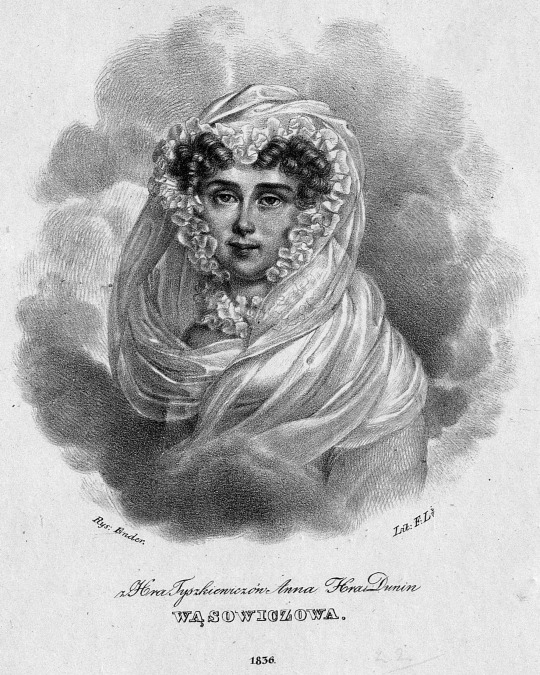
Portrait of Countess Dunin Wąsowicz, Anna née Tyszkiewicz, 1836.
As for her relationship with Prince Józef, it were her own words that made Fałkowski write that "the beautiful prince fell in love with Anetka" although "it was a platonic feeling".
"… Mrs. Aleksandrowa (Anetka Potocka - AS ) herself half-admitted thisin her old age. ''On disait alors que le Prince Joseph avait pour moi un sentiment plus tendre que l'amitié (it was said that Prince Joseph had for me a feeling more tender than friendship),' she would recalled with a dreamy expression on her face."
The second thing that leads historians to believe that Pepi could have distinguished this cousin of his from other relatives is the provision in his will, according to which she was to receive, after the death of the prince's sister, Teresa Tyszkiewicz, his favorite palace in Jabłonna near Warsaw. And when this did happen, Anetka ordered a triumphal arch to be built in the park in memory of Prince Józef.

The palace in Jabłonna, 2019
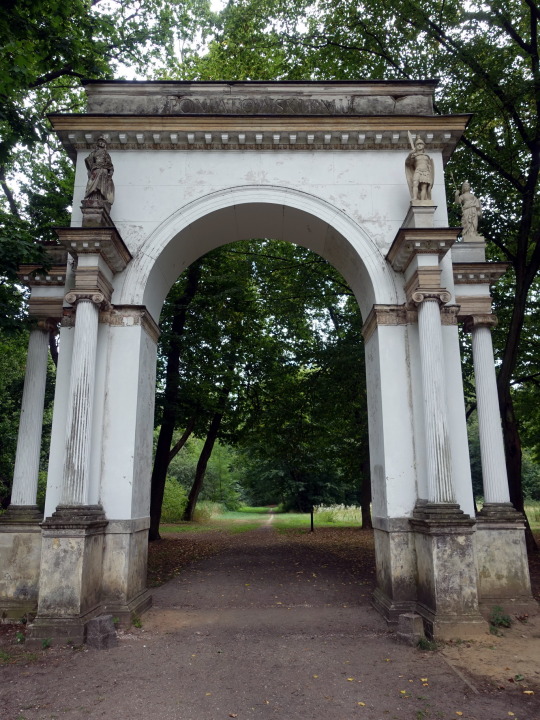
The triumphal arch from Jabłonna's park, 2019
And collage of mine is an illustration to the part dedicated to the rest of the women, whose portraits I wasn't able find. And honestly, the evidence that they might have been Prince Józef's love interests is very weak. But, since historians from time to time do mention these ladies' names, I thought them worth being included as well…
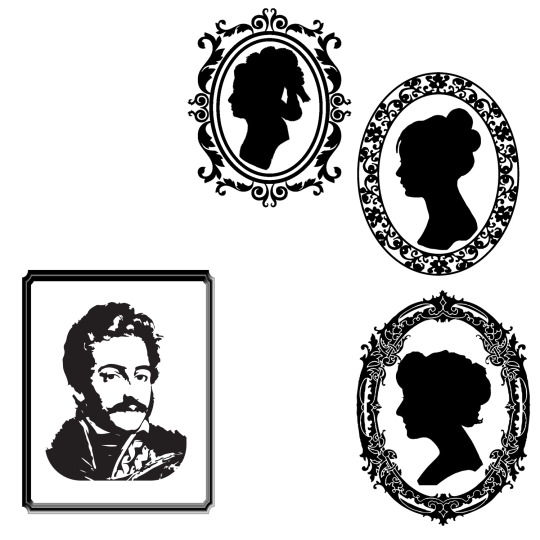
For example, in the prince's testament, together with Henriette de Vauban, Zofia Czosnowska and the above mentioned Anetka Potocka, there was mentioned Elżbieta Merlini, the daughter of Dominique Merlini, an Italian architect, the last main builder of the Polish-Lithuanian Commonwealth. But such concern for the architect's daughter may have been explained by a sense of moral debt to her father, which the prince Józef inherited from King Stanisław with the rest of the things.
Then, the list of Pepi's women sometimes complemented by another "Elżbieta" - Cichocka (although her real names were Emilia Karolina - or Katarzyna) née Bachmińska I° voto Szymanowska, II° voto Cichocka, III° voto Abramowiczowa. It is said she even sojourned in Jabłonna before 1810, until being apparently forced by Zofia Czosnowska to leave the place. After that Madame Cichocka went to Vilna, where she married her third husband. However, what IMHO should be taken into account in regards with this lady is that her second husband, Michał Cichocki, was an illegitimate son of Stanisław August, which might have made Prince Józef consider her a relative and thus take care about.
The same can be said about Madame Kicka - Józefa Martyna Rozalia née Szydłowska, who was a sister of Elżbieta Grabowska, another mistress of King Stanisław.
Sometimes the names of women who were friends and companions of Madame de Vauban are also included to the list of prince Józef's love interests. Those are: Anna Krasińska, a relative of general Krasiński and the wife of Mikołaj Oppeln-Bronikowski; Salomea Wielhorska née Dembińska; Anna Trębicka née Czerska, future wife of general Kamieniecki, and Józefa Potocka née Sollohub.
PS. As the regular visitors to the Copper Roof Palace are as well mentioned two ladies of the surname Walewska: Józefina née Lubomirska, the wife of Adam Walewski and the future wife General Witt, and Maria, the wife of Anastazy Walewski. The first of them was known for her kind of loose behavior, so presumably she might have at least flirted with Pepi; the second one is the famous Maria Walewska, but all I know about her makes me think her love for the emperor left no room in her heart for other men.
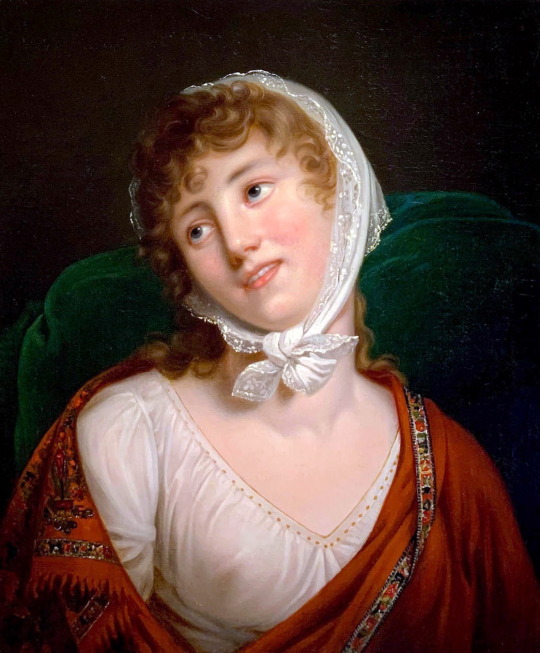
Portrait of Maria Walewska by Robert Lefèvre
#poniatowski#józef poniatowski#józef poniatowski’s women#queen Louise of Prussia#Giuseppe Grassi#Anetka Potocka#Jabłonna#Jabłonna palace#Maria Walewska#Robert Lefèvre
11 notes
·
View notes
Text
So you know how Alexander went to Memel to meet the Prussian royal couple after he became emperor, and there’s been rumors of his romance with Queen Louise? Well Adam Czartoryski in his memoirs mentions how Alexander locked himself in every night while staying there to avoid someone (Louise and her sister) coming in at night because their rooms were connected.

#i can’t even with this man#for a guy with a casanova reputation he sure goes to great lengths to avoid having sex#tsar alexander i#alexander i of russia#queen louise of prussia#frederick william iii#adam czartoryski
48 notes
·
View notes
Text

Usually don't do birthday posts because I just forget these dates anyway, but at least here I could combine it with my resolution of drawing more women. So, here‘s Queen Louise of Prussia.
#artists on tumblr#queen louise of prussia#in the uniform of her regiment#and a fantasy hat because i couldn‘t make it work#napoleonic wars
27 notes
·
View notes
Photo

Given his personal kindness, it should not come as a surprise that Duroc also was a skilled diplomat. He was sent as an envoy to several courts and usually had great success. This is an account of his first appearance at the Prussian court in late 1799, immediately after Napoleon Bonaparte’s coup d’état, taken from an Austrian weekly magazine “Die Reform”, Vienna 1870. The First Consul realizes that Prussia might become an important ally against Austria:
Bonaparte recognised the great importance of these circumstances and took the greatest care to flatter the Prussian court. He decided on an extraordinary act, that is, to notify the Court of Berlin of France's new constitution through his own envoy. Imitating the example of monarchs, the consul sent one of his aides-de-camp to Berlin. This military ambassador was Duroc, who distinguished himself among the republican officers by his bearing and agreeable character, and who, as a participant in the Egyptian glory, was suited to impress even a royal court. Duroc was instructed by Bonaparte to go in haste to Berlin, to pay his respects to the King and Queen, to appear as being sent only in a matter of courtoisie, but at the same time to take the opportunity of explaining the latest change in the state of France, to present it as a return to order, to all wholesome customs, and especially to the idea of peace. Duroc was to flatter the young King of Prussia as much as possible, to assure him of Napoleon's admiration and deference, and to hint to him that, if he wished, he would be gladly made the arbiter of any future work of peace.
There was good reason to be curious about how Duroc would be received in Berlin. Prussia had made and kept peace with the French Republic, but had otherwise always shown a proud coldness towards it. Now France was still a republic, Bonaparte was nothing but a general of the republican army and at the moment, with two colleagues, consul, i.e. official of the republic. He now sent off one of his aides-de-camp, like a potentate, to greet the proud, etiquette-stricken Prussian royal court. He had reason to fear that this mission would be a fiasco. However, the most brilliant opposite occurred. Duroc was received in Berlin with the greatest distinction, the King and Queen repeatedly granted him confidential audiences, he was invited to the most intimate circles in Potsdam and was soon an object of admiration for the entire court, indeed for all of Berlin. Everyone wanted to see him and hear about the heroic deeds in Egypt, a curiosity that Duroc satisfied with dignified modesty. He behaved with a dexterity as if he had always been at home in court circles. The courtiers felt properly relieved when they saw that the republican heroes were also such respectable people. From the behaviour of Bonaparte's envoy, favourable conclusions were drawn as to the character of the heroic general himself; indeed, the republic itself began to be regarded in a milder light. Duroc's success was so complete that Queen Louise in particular, who was the mind and heart of the Berlin court, gave him proof of her greatest benevolence.
She would not always like him that much but she would still trust him enough to tell him how much she had felt deceived by Napoleon in Tilsit in 1807.
38 notes
·
View notes
Text




Faces from the painting Napoléon Ier reçoit la reine de Prusse à Tilsitt, 6 juillet 1807 by Jean-Charles Tardieu (1808)
Versailles collections
25 notes
·
View notes
Text

Crown Prince Frederick Wilhelm of Prussia (future King Frederick Wilhelm III) and his wife Crown Princess Louise (future Queen Louise of Prussia)
#king frederick wilhelm iii#queen louise of prussia#prussian royal family#german history#house of hohenzollern
22 notes
·
View notes
Photo

I went to see the Vigee-LeBrun show at the Met a few years ago and I discovered she painted her women to look all the damn same. How do you make Caroline Bonaparte and Louise of Prussia look the same? Well, she did it!
0 notes
Text
Napoleon’s beautiful enemy

5 notes
·
View notes
Photo

Friedrichwerder Church 3by pingallery
9 notes
·
View notes
Text
Is there a single European monarch Alexander was NOT rumored to have slept with??

the ambassador in question is Caulaincourt btw. Oh but that’s not all.

the author then goes to assure that these relationships remained strictly platonic (which I’m inclined to agree with). But it is insane that Josephine died mere days after his last visit
#I hate that the ridley scott movie chose to focus on these specific rumors about Josephine when the context is so. rich.#like imagine your ex wife and your ex nemesis-turned-ally-situationship meet up after you got exciled to bad boy island to talk shit about u#tsar alexander i#josephine bonaparte#queen louise of prussia#napoleon bonaparte#empress josephine#Alexander I: the tsar who defeated Napoleon < source
39 notes
·
View notes
Photo



"The Queen of Beauty" Queen Louise of Prussia who uses Louisenbad Reduction Salt. Scholtz Drug Co. Denver, COLO pamphlet, c. 1920s.
"Be Slender and Healthy and Keep So the Pleasant Easy Way. Use LOUISENBAD Reduction Salt (For the Bath). Don't Wait Until You Are Fat"
#Queen of Beauty#Queen Louise#Queen Louise of Prussia#Louisenbad#reduction salt#Scholtz Drug Co#Antique Pamphlet#1920s#Beauty#Vintage Beauty#Bath Salts#Ephemera Obscura Collection#Ephemera For Sale
4 notes
·
View notes
Photo

And just because I once more stumbled upon something funny I never looked for. From the diary of Countess Voss, head lady-in-waiting to Prussian queen Louise of Prussia:
February 16, 1807
[...] A perfectly detestable French general, named Bertrand, had arrived today; Klüx brought him here and he was with the King for a moment before dinner. In the evening he by all means wanted to be introduced to the Queen, who was as indignant about him as I was. He has an odious face and dared to tell her that Napoleon hoped she would use all her influence to hasten the conclusion of peace, and also hoped that she would no longer harbour any unjust prejudice against him. - The Queen answered him with great mildness and dignity that women had no say on matter of war and peace. - We were appalled at his nature and his whole demeanour. […]
February 20, 1807
Consultations again. The queen told me that she had asked the king most earnestly to remain firm and to not make peace now.
No say in matters of war and peace, eh? If only.
You don’t want to hear her first impressions on Napoleon himself in Tilsit.
#napoleon bonaparte#henri-gratien bertrand#queen louise of prussia#countess voss#blondie's babysitter
35 notes
·
View notes
Photo

Model for a memorial "Napoleon und Königin Luise in Tilsit", created about 1900 by Gustav Eberlein (1847-1925).
wikimedia commons
33 notes
·
View notes
Photo

Consorts Spam
Queen Louise of Prussia
5 notes
·
View notes
